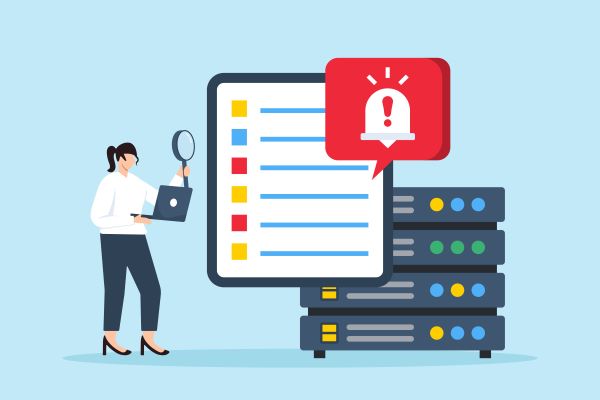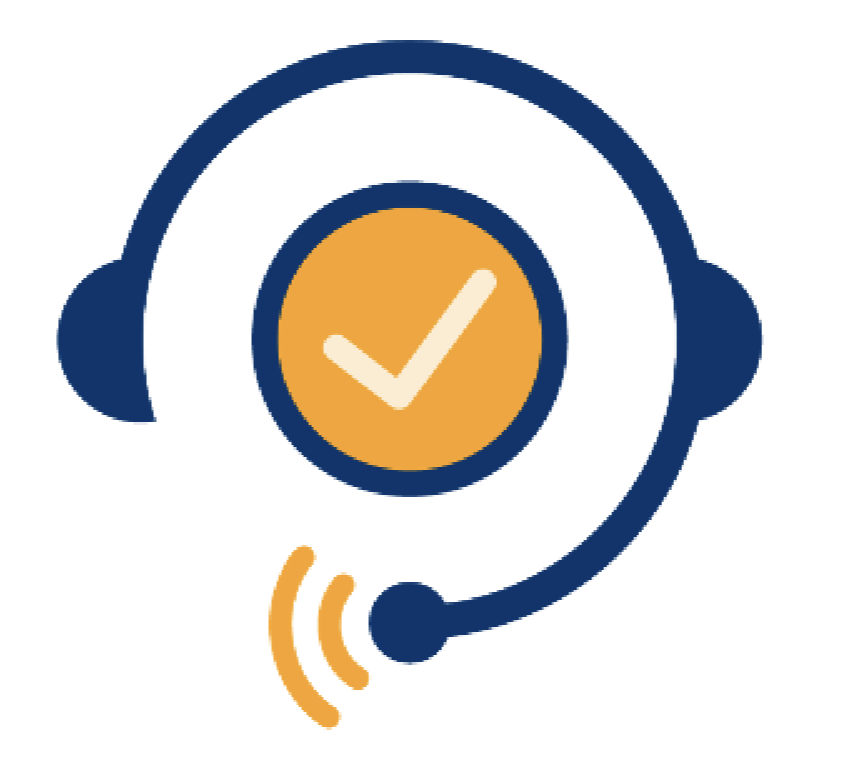
In today’s digital landscape, threats don’t knock before entering. According to industry reports, cyber attackers can lurk inside networks for an average of 11 days before detection, often only surfacing when damage has already been done. These silent breaches underscore a critical truth: what you don’t know can hurt you.
Whether it’’s an external threat actor planting malware, an internal misconfiguration compromising performance, or a resource nearing its limits, you should be aware of the threats facing your business. Visibility is the key to resilience. That’s why effective monitoring and alerting is no longer just an IT luxury. It’s truly a business-critical function that supports security, productivity, uptime, and long-term cost efficiency.
In this article, we’ll define what monitoring and alerting involve, break down its core functions, and explore five key benefits your organization can realize by implementing it effectively.
What Is Monitoring and Alerting?
Monitoring and alerting refers to the continuous, real-time oversight of your IT infrastructure, encompassing networks, servers, endpoints, applications, cloud environments, and other connected systems. Its core purpose is to identify issues early, whether they relate to performance, configuration, or cybersecurity threats, before they can escalate into outages, data breaches, or costly downtime.
A robust monitoring and alerting framework typically includes the following key components:
-
Discovery – Automatically identifies and inventories all connected devices, services, applications, and cloud assets within your environment. This creates a complete and dynamic picture of your digital ecosystem.
-
Monitoring – Continuously tracks the health and performance of critical components, including CPU usage, memory, disk space, network bandwidth, open ports, and process activity. This ensures that both underutilization and overutilization are flagged early.
-
Mapping – Visually represents your infrastructure, showing how systems and services are interconnected. This enables IT teams to quickly identify the source of issues and assess the potential impact of any disruption.
-
Reporting – Provides access to real-time and historical data, along with trend analysis and benchmarking. This enables strategic planning, capacity forecasting, and root-cause analysis over time.
-
Alerting – Sends real-time notifications when predefined thresholds are crossed, anomalies are detected, or systems behave abnormally. These alerts are often prioritized and enriched with context and suggested remediation steps to help teams respond efficiently.
When combined, these capabilities create an intelligent early warning system. Rather than waiting for users to report problems—or worse, discovering them after a breach or crash—monitoring and alerting enables IT teams to stay ahead of incidents, act on emerging threats, and ensure system reliability.
More importantly, these tools form the foundation of a proactive IT and cybersecurity strategy. By providing visibility into the operational and security status of your environment, they empower organizations to make faster, data-driven decisions that reduce risk and improve resilience.
Monitoring and Alerting Benefits
With this groundwork in place, let’’s explore the tangible business benefits that effective monitoring and alerting can deliver, starting with its impact on productivity.
1. Boost Operational Productivity
Unplanned IT disruptions are silent productivity killers. According to a study by Robert Half Technology, professionals lose an average of 22 minutes per day dealing with tech-related issues, adding up to nearly two weeks per year per employee.
An effective monitoring and alerting solution reduces this by:
-
Instantly identifying the root cause of IT incidents.
-
Minimizing mean time to resolution (MTTR).
-
Preventing problems before they escalate into downtime.
When IT teams aren’’t constantly chasing after surprise outages or buried in help desk tickets, they can focus on strategic projects. And when employees experience fewer service interruptions, they can work more efficiently. Monitoring becomes a force multiplier, improving both individual and team productivity.
Additionally, for small or overstretched IT teams, outsourced monitoring services can deliver 24/7 oversight without increasing headcount. This lets you easily get support for patching, maintenance, and remediation around the clock.
2. Strengthen Infrastructure and Cybersecurity
Security is no longer an isolated function. Today’s most effective security programs are built into the core of IT operations, and monitoring plays a central role.
With the rise of remote work, cloud environments, and hybrid networks, traditional perimeter security has become less reliable. Monitoring and alerting, integrated with tools like Security Information and Event Management (SIEM) platforms, provides a dynamic way to detect:
-
Unusual traffic patterns or spikes in data transfer
-
Unauthorized access attempts from unknown IP addresses
-
Compromised endpoints behaving abnormally
-
Disconnected security controls, like firewalls or antivirus tools going offline
These signals, when caught early, can stop a breach in its tracks. Without this visibility, attackers can move laterally through the network for days or even weeks, exfiltrating data, deploying malware, or elevating privileges undetected.
Monitoring also supports regulatory compliance (e.g., GDPR, HIPAA, ISO 27001) by enabling audit trails, anomaly detection, and real-time threat alerts that demonstrate due diligence in security.
3. Accelerate Incident Response and Disaster Recovery
Every second counts during an incident.
Whether it’s a system crash, ransomware deployment, or hardware failure, early detection through alerting can initiate immediate containment and remediation. Monitoring tools can trigger disaster recovery (DR) protocols and failover systems (often automatically), allowing you to:
-
Activate backup environments quickly
-
Restore data from clean snapshots
-
Limit the blast radius of an attack or malfunction
For organizations with a Business Continuity Plan (BCP), monitoring serves as the critical trigger that shifts operations into emergency mode. Without it, the response is delayed, damage is more severe, and recovery is more prolonged and costly.
Effective monitoring also supports post-incident forensics, enabling teams to identify what went wrong, when it did, and how it happened. That way, future risks can be effectively mitigated.
4. Monitor and Optimize Applications
Applications—whether they’’re web-based, desktop, mobile, or cloud-native—are central to how organizations serve customers, empower employees, and run daily operations. When these applications slow down or fail, the impact is immediate: productivity stalls, user satisfaction drops, and business outcomes suffer.
Comprehensive application monitoring ensures that your business-critical apps remain available, responsive, and performant by:
-
Continuously monitoring availability across all environments—whether hosted in the cloud, on-premises, or hybrid deployments.
-
Tracking key performance metrics such as load times, error rates, memory usage, CPU consumption, API response times, and transaction failures.
-
Detecting anomalies or degradation before end users are affected, triggering real-time alerts for rapid resolution.
Whether you’re managing customer-facing services like e-commerce platforms, employee productivity tools like CRM and ERP systems, or backend services like databases and APIs, proactive monitoring helps your team identify and resolve issues before they escalate into user complaints or revenue loss.
Additionally, application monitoring provides deep insights into usage patterns, system dependencies, and performance trends, supporting better capacity planning, scalability decisions, and resource optimization during high-demand periods such as product launches or seasonal spikes.
In short, monitoring isn’’t just about keeping applications online—it’’s about ensuring they perform reliably, scale efficiently, and deliver consistently excellent experiences to everyone who relies on them.
5. Reduce IT and Business Costs
Downtime is expensive. Gartner estimates that the average cost of IT downtime is $5,600 per minute, although it can be significantly higher depending on the industry.
Monitoring reduces these costs in two ways:
-
Minimizing downtime by catching failures and performance issues early.
-
Preventing overprovisioning by giving accurate insights into actual resource needs.
Fearing unplanned outages, many IT teams overinvest in bandwidth, storage, and compute. With real-time usage data from monitoring tools, they can right-size infrastructure and significantly reduce costs.
Monitoring also helps spot underutilized assets, shadow IT, or orphaned resources, allowing organizations to decommission or reallocate them more efficiently.
Finally, by reducing incident frequency and duration, monitoring also lowers indirect costs, such as lost productivity, brand damage, and customer churn.
What to Look for in a Monitoring and Alerting Solution
Choosing the right monitoring and alerting solution depends on your environment, but the following features are essential for most organizations:
1. 24/7 Real-Time Monitoring
The solution should provide continuous, round-the-clock coverage with instant alerts via email, SMS, or integration with platforms like Slack or Microsoft Teams.
2. Expert Support and Automation
Look for vendors that offer expert response teams, guided remediation, and automation capabilities to resolve common issues without manual intervention.
3. Broad Coverage Across Systems
A practical solution should support:
-
Physical and virtual servers
-
Cloud infrastructure (AWS, Azure, GCP)
-
Web applications and APIs
-
Firewalls and security appliances
-
UPS and environmental controls
-
Switches, routers, and WAN performance
4. Flexible Alerting and Custom Thresholds
You should be able to define custom rules, escalation paths, and alert severity levels that align with your business priorities and objectives.
5. Integrations and Dashboards
The best tools integrate with SIEM, ticketing systems, DevOps tools, and analytics platforms—providing a single pane of glass for visibility and control.
6. Proven Track Record
Choose a solution provider with a history of successful deployments, strong uptime SLAs, and clear case studies or testimonials from similar businesses.
Final Thoughts: Monitoring Is a Strategic Asset
In today’s threat-rich, performance-sensitive IT environment, monitoring and alerting is more than a reactive tool—it’s a strategic enabler.
By giving you constant visibility into what’s working, what’s failing, and what’s vulnerable, monitoring transforms how you manage infrastructure, protect data, and support the business. It empowers IT teams to move from firefighting to foresight—from being problem solvers to value drivers.
Thank you for trusting us to help with your cybersecurity needs. Contact us any time – we’re always happy to help.
Adam


